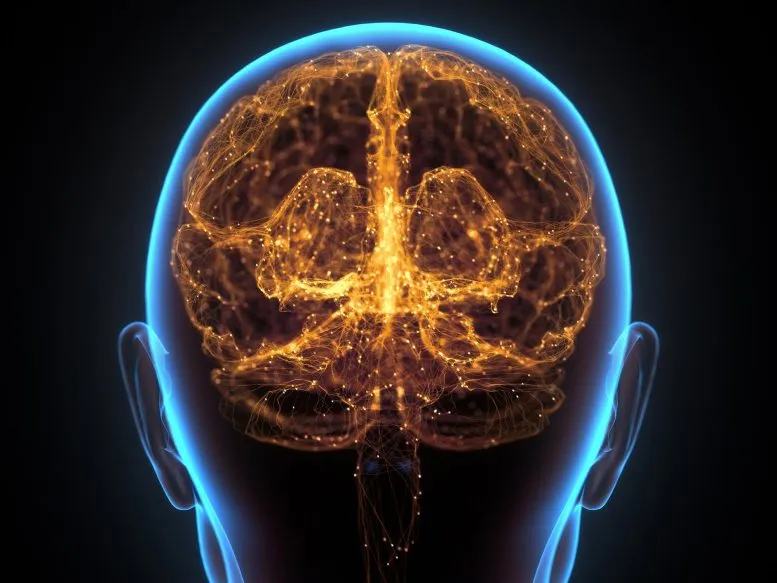A new study shows that people with mental illness have a larger area of the striatum in their brain. Neuroscientists used MRI scanning to find that the striatum of psychotic patients is 10% larger than that of normal people. This is the neuron group of basal ganglia under the forebrain cortex, which can be used to represent the obvious biological difference between psychotic patients and non psychotic patients.

Neuroscientists from NTU Singapore, the University of Pennsylvania and California State University have discovered biological differences between psychiatric and non psychiatric patients. Using magnetic resonance imaging (MRI) scans, scientists found that the striatum (an area of the forebrain) of psychotic patients was 10% larger than that of the control group with low or no psychotic characteristics.
Psychopaths, or people with psychopathic characteristics, refer to people with conceit and antisocial tendencies. This is usually manifested in a lack of guilt for their actions, a lack of compassion for others, and in some cases, a criminal tendency.
As a part of the forebrain, the striatum is a subcortical region that contains the whole brain. It coordinates many elements of cognition, including movement and action planning, decision-making, motivation, reinforcement and reward perception.
Previous studies have shown that psychiatric patients have overactive striatum, but the effect of its size on behavior has not been confirmed. New research shows that there are significant biological differences between people who exhibit psychopathic tendencies and those who do not. Although not all people with psychotic characteristics will eventually break the law, and not all criminals meet the criteria of psychosis, there is a strong correlation between them. There is also important evidence that psychosis is associated with more aggressive behavior.
An understanding of the role of biology in antisocial and criminal behaviour may help to improve existing behavioural theories and inform policy and treatment options. To conduct their research, neuroscientists scanned the brains of 120 participants in the United States and interviewed them using the psychopathology checklist, a psychological assessment tool used to determine whether individuals have psychopathological characteristics.
Olivia choy, an assistant professor from the school of Social Sciences of Nanyang Technological University, is the co-author of the study, "Our findings help advance our knowledge of the underlying antisocial behaviors (such as psychosis). We found that, in addition to the impact of the social environment, it is important to consider the possible biological differences between antisocial and non antisocial individuals, in which case, the size of the brain structure," she said

Assistant Professor Olivia choy, a neuroscientist at the school of Social Sciences of Nanyang Technological University, is currently showing a diagram of the human striatum.
Professor Adrian Rehn of the Department of criminology, psychiatry and psychology at the University of Pennsylvania, who co authored the study, said: "since biological characteristics, such as the size of a person's striatum, can be inherited from parents to children, these findings provide more support for the neurodevelopmental view of psychosis - the brains of these criminals do not develop normally throughout childhood and adolescence."
Professor Robert schuger of the school of criminology, criminal justice and emergency management at California State University, long beach, who is the co-author of the study, added: "the use of psychiatric checklists in community samples is still a novel scientific method. It helps us understand the psychiatric characteristics of individuals who are not in prison, but those who walk among us every day.".
Andrea Glenn, an associate professor of psychology at the University of Alabama, stressed the significance of the work done by the joint research group: "By replicating and extending previous work, this study has increased our confidence that psychosis is related to structural differences in the striatum, a brain region that is important in various important processes of cognitive and social functions. Future research will need to understand the factors that may lead to these structural differences.".
The results of this study were recently published in the peer-reviewed academic journal Journal of psychiatric research.
Through the analysis of MRI scanning and interview results to screen for mental disorders, researchers linked the larger striatum with the increased demand for stimulation, and the possibility of stimulation, excitement and impulsive behavior is higher.
The striatum is a part of the basal ganglia, which is composed of neurons deep in the center of the brain. The basal ganglia receives signals from the cerebral cortex, which controls cognition, social behavior and distinguishes which sensory information deserves attention.
However, over the past 20 years, people's understanding of the striatum has expanded, giving rise to the suggestion that the region is related to social behavior difficulties. Previous studies have not addressed whether increased striatum is observed in adult women with psychiatric characteristics.
The neuroscientists said that in their study of 120 people, they examined 12 women and observed for the first time that psychosis was associated with increased striatum in women, just like men. During human development, the striatum usually becomes smaller as children mature, which indicates that psychosis may be related to differences in brain development patterns.
Assistant Professor Choy suggested that there is still a need to better understand the development of the striatum. Many factors may be involved in why one person is more likely to have psychopathic characteristics than another. Psychosis may be related to structural abnormalities in the brain, which may be developmental. At the same time, it must be recognized that the environment can also affect the structure of the striatum.
Professor Raine added: "we have always known that people with mental illness will seek reward at all costs, including criminal activities involving property, sex and drugs. Now we have found the neurobiological basis of this impulse and stimulating behavior in the form of enlarged striatum, a key brain region involved in reward."
Scientists hope to conduct further research to find out why the striatum of people with psychotic characteristics expands.